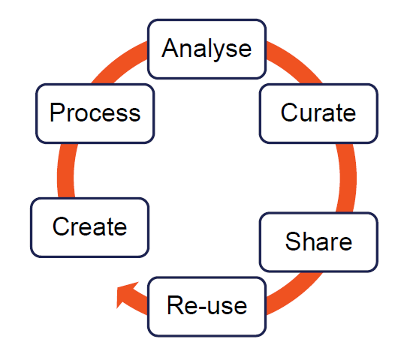A formal DMP helps researchers plan their study project and data before, during, and after research project. It aims to collect, document, make accessible, and preserve data for future use.
In all research data lifecycle phases, the DMP should address these questions.
“How do I manage my data during this phase?”
“What type of data am I creating & managing?”
“How long do I store the data and how will

